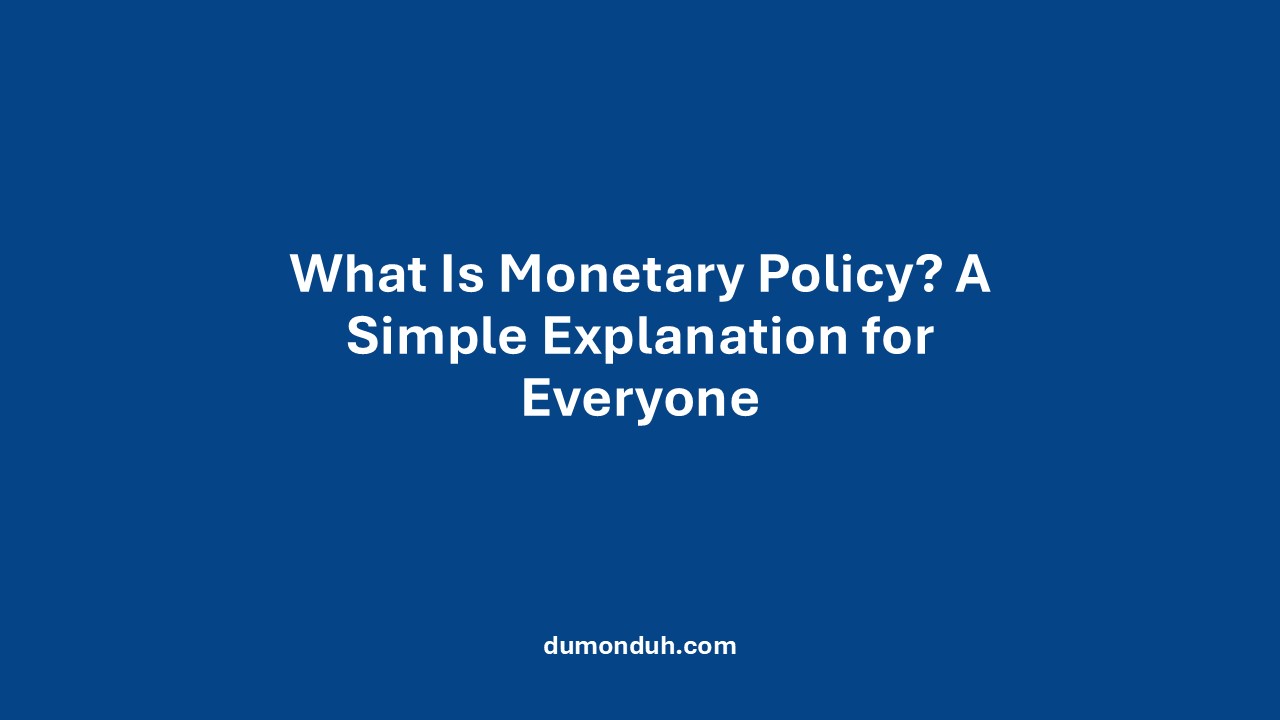When people talk about the economy, you might often hear the term “monetary policy.” It sounds technical, but the idea behind it is actually quite simple. Monetary policy is how a country controls the amount of money flowing through its economy — like adjusting the temperature of a room to keep it comfortable.
The Main Goal: A Stable Economy
The purpose of monetary policy is to keep prices stable, encourage economic growth, and maintain a healthy level of employment. In other words, it helps ensure that money keeps its value, businesses can grow, and people can find jobs.
If prices rise too quickly (inflation), things become more expensive and people can buy less. But if prices fall too much (deflation), businesses might stop producing and lay off workers. Monetary policy helps balance this out.
Who Controls It?
In most countries, the central bank is in charge of monetary policy.
Examples include:
- The Federal Reserve in the United States
- The European Central Bank in the Eurozone
- Bank Indonesia in Indonesia
- The Bank of England in the UK
These institutions are independent from the government, so they can make decisions based on what’s best for the economy — not politics.
The Main Tools of Monetary Policy
Central banks have a few key tools to manage the economy:
- Interest Rates
This is the most famous one. By raising or lowering interest rates, central banks can make borrowing money more expensive or cheaper.- Lower rates → People borrow more, businesses invest, economy grows faster.
- Higher rates → Borrowing slows down, spending decreases, inflation cools off.
- Open Market Operations
This means buying or selling government bonds. When the bank buys bonds, it adds money to the system (stimulating the economy). When it sells bonds, it takes money out (slowing things down). - Reserve Requirements
Banks must keep a certain amount of money in reserve. If the central bank lowers this requirement, banks can lend more — boosting spending and investment.
Why It Matters to You
Even if you’re not an economist, monetary policy affects your daily life. It influences:
- The interest rate on your credit card or home loan
- How expensive groceries become next year
- Whether companies are hiring or cutting jobs
So, when you hear that the central bank has changed interest rates, it’s not just news for investors — it’s something that can affect everyone.
In Short
Monetary policy is simply how a country manages money to keep its economy healthy. It’s about balance — making sure there’s enough growth without letting inflation get out of control.
It may sound complex, but at its heart, it’s all about helping people live in a stable, predictable economy where money keeps its value and opportunities can grow.
Written for readers who want to understand economics in plain language — because money shouldn’t be a mystery.

